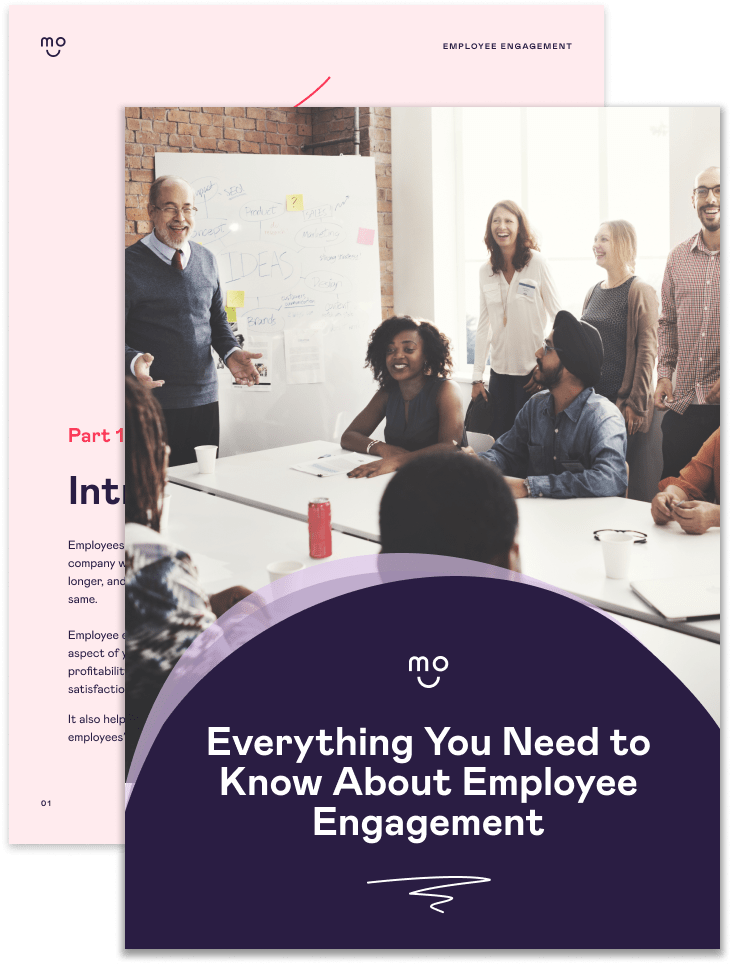Employee engagement strategies that worked ten years ago don’t necessarily have the same success now.
Businesses have faced many challenges over the last two years and are continuing to take their first tentative steps after shifts that changed our working lives. Things now operate differently, and how and where you work has changed.
So much so, that a recent survey found only 13% of working parents said they wanted to return to ‘the old normal’.
With a range of working models now popular, from fully remote to full-time office-based, your employee engagement strategies must fit with the new world of work.
What is employee engagement?
Employee engagement is a measure of how enthusiastic, invested, and passionate employees are about their careers and role within an organisation. When employee engagement is high, companies – for the most part – tend to be more successful.
That’s because a highly engaged workforce performs better, is more productive and represents the company passionately. Good employee engagement is linked to high morale and job satisfaction.
In contrast, poor employee engagement is linked to poor performance, low morale, high turnover of staff and higher rates of sick leave.
What is an employee engagement strategy?
So we know that employee engagement benefits companies considerably. But how do employers achieve excellent employee engagement?
Well, that’s through a practical, well-thought-out employee engagement strategy.
An employee engagement strategy is a plan for how you as an employer will keep all your staff engaged with the company. And it’s about documenting the results from each initiative to fine-tune your strategy.
How to measure employee engagement
Employee engagement can be measured in various ways. One popular way to measure employee engagement is through a survey, asking employees for their opinions (anonymously, of course), which means you end up with accurate data to analyse.
Feedback-intensive appraisals, exit surveys and productivity levels are other ways to gauge your employees’ engagement.
The telltale signs of disengaged employees typically come from high turnover, low morale and sickness absence rates.
Top 5 employee engagement strategies to implement in your organisation
1. Prioritise the wellbeing of your employees
More and more, employees are demanding a positive work-life balance. Your employees’ health and wellbeing directly contribute to your company’s success – or failure. As an employer, it’s your responsibility to ensure that your staff are happy and not burnt out.
After all, healthy, happy employees take fewer sick days, are more passionate about their work and are less likely to change jobs.
How you can do this can take many forms, including ensuring your leaders discuss workloads with their teams and flagging when more help is needed to support their staff. Salary benchmarking is also another way you can ensure people feel fairly compensated for the work they are doing.
Then alongside the above, you could organise team days away to promote relationships outside of work, subsidise a gym membership or even provide access to meditation apps.

Everything You Need to Know About Employee Engagement
Get your complete guide on all things employee engagement
2. Provide employees with regular feedback
As humans, we always want to learn and improve. The more constructive feedback we receive about what we are doing right (or wrong), the more we can fine-tune our day-to-day role and build our skills.
Feedback to your employees can come in many forms, both formal and informal. Whether it’s a simple ‘well done’ after they’ve completed a great piece of work, a recognition post on your employee recognition software, or a monthly one-to-one, your people need to feel appreciated and seen.
We care about doing good work. So when there’s something your team member could improve on, let them know so that they can do better next time.
3. Ensure your onboarding process is fun and memorable
As the old saying goes, “You don’t get a second chance to make a great first impression”. And it’s true; your new employee’s first day – or week – in your company tells them everything they need to know.
Think about how many times you’ve joined a new company and sat twiddling your thumbs for most of the first week. You had no logins, a few IT issues, your staff card wasn’t ready, and nobody had free time to show you around.
What kind of first impression does that create?
For most, they’d feel like a burden, and with little work to do, their first week may be dull and uneventful.
You can avoid all those negative first impressions with a thoughtful, fun onboarding process that leaves new employees with great memories.
How you achieve a good onboarding process is up to you, and the steps you take will depend on your company, whether you’re remote or in the office.
4. Recognise your employees
Often, employees only hear from supervisors and higher management when something is wrong. Their stomachs do somersaults when they’ve been summoned to a manager’s office, wondering what they did.
Instead, wouldn’t it be nice if your employee found out it wasn’t something they did wrong; in fact, it was the opposite; they were doing a great job? Appreciation for a job well done can go a long way!
Recognising your employees is a critical way to ensure they feel important, showing them that their hard work is recognised by management. Happy, motivated workers are 12% more productive than those who are demotivated and think their efforts are rarely noticed. Recognising great work consistently results in higher productivity.
5. Offer employees ongoing learning opportunities
Henry Ford once famously said, “The only thing worse than training your employees and having them leave is not training them and having them stay.” And while Henry Ford operated in a different era and on a larger scale, his words still ring true today.
Companies that offer comprehensive training programmes have a 218% higher income per employee than companies without formalised training.
Learning shouldn’t stop at age 16 or 21. It should be a lifelong process.
Your employees are the same; they might have a master’s degree in English or a PHD in Software Engineering, but most will always be keen to learn more. And employees that are happy and learning tend to stay longer in those companies, saving employers a fortune on recruitment.
So, how could you help provide your employees with ongoing learning opportunities?
One way is you could provide subsidised help towards qualifications or part-time courses, offer access to training courses online, or you could organise weekly, fortnightly or even monthly lectures on different topics.
6. Employee engagement tools
As Elon Musk puts it, “a company is only as good as its people”. So, what are you doing for yours?
Transform your culture with Mo

- Improve employee engagement scores
- Reduce employee churn
- Build a collaborative culture
Mo is a new kind of reward and recognition platform that makes it easy for busy managers to meaningfully recognise, engage and connect with their teams.
We equip managers with weekly suggestions to energise and connect with their people, help teams build habits of recognition into their day-to-day rhythms and go beyond simple rewards as a way to motivate staff.
Join companies like SHL, OVO Energy and William Hill in delivering meaningful improvement on engagement results with Mo. Book a free demo today!




